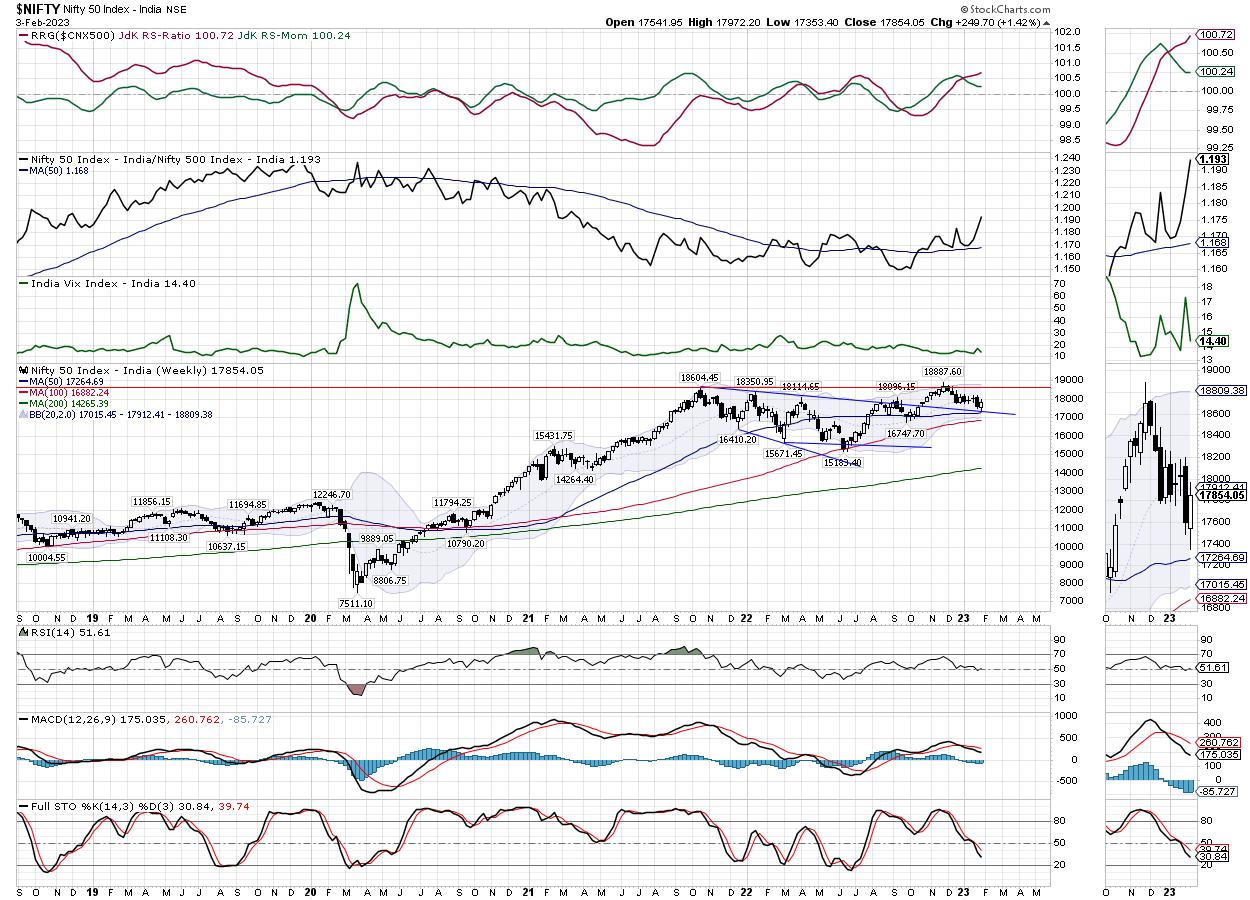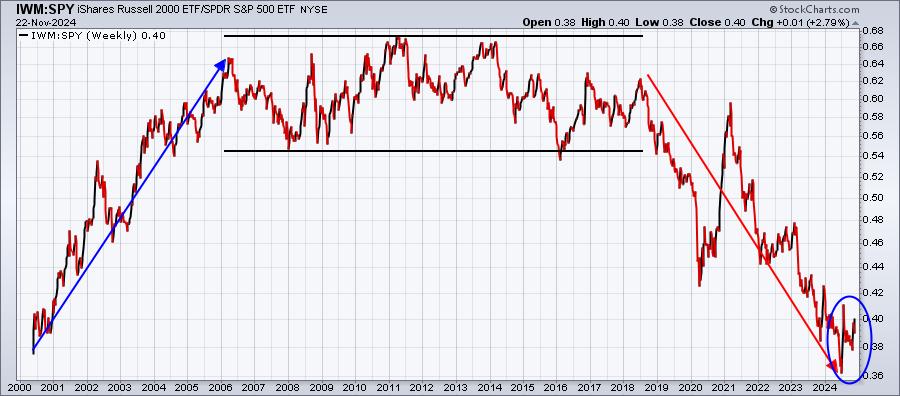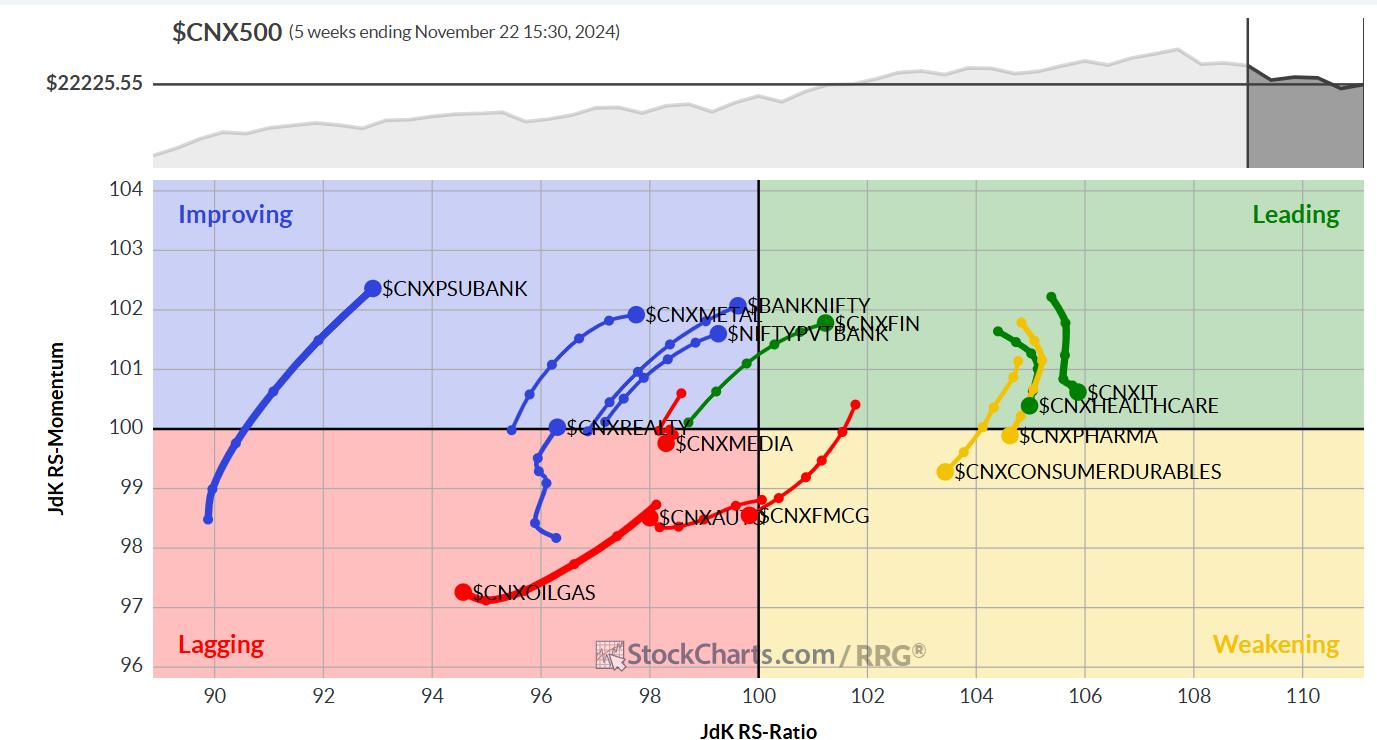At the end of the week, the stock markets left a very eventful week. Two major events were expected to bring volatility to the markets. The first was the Union budget; This event is one of the most important external domestic events that markets react to. The other was the Fed’s rate hike, which came late in the evening of the same day. The Fed hiked rates as expected, but at a slower pace. For the past five sessions, the NIFTY has been oscillating in a trading range of 618 points; This entire range of trades was drawn up on the day the Union budget was tabled in Parliament. That day, the headline index fluctuated wildly by 300 points on either side. In the end, the NIFTY ended much stronger than expected, but closed with a net gain of 249.70 points (+1.42%) on a weekly basis.
Following the publication of the Hindenburg report, Adani Group stocks continued to tumble. Coming back to the core technical perspective, the NIFTY had breached the 20-week short-term MA after claiming support for it for five weeks. This 20-WMA currently sits at 17912. If this point is not taken out, it will likely provide some resistance to the index on a closing basis. Another key resistance point to watch for is that of 100-DAY, MA which currently stands at 17945. This makes the 17900-17950 zone an immediate and key area of resistance for the Nifty to progress from here.
Despite these wild swings, volatility declined. INDIAVIX lost 16.87% to 14.40. In the coming week, NIFTY has major resistance at 17950 and 18190 levels. Support would be much lower at 17520 and 174360 levels. The trading range is expected to remain wider than usual.
The weekly RSI is 51.61; it remains neutral and shows no deviation from the price. The weekly MACD is bearish and remains below the signal line.
Pattern analysis of the weekly chart shows that the index has inherently failed to stage a breakout above 18600; it marked its incremental high at 18887, after which it slipped below the breakout point. After this retracement, NIFTY took support at the 20-week MA for five weeks, and this support has also been breached in the recent past. Technically, this 20-DMA level at 17912 remains a key resistance point for the NIFTY, followed by the daily chart’s 100-day ma at 17945. This has created a 17900-17950 resistance zone for the index.
With all major events out of the way, markets are likely to remain range bound. Unless the 17900-19750 zone is convincingly taken out, we are unlikely to see a meaningful and sustained uptrend here. Despite the pullback we have seen from the week’s lows, it is highly recommended not to get carried away and remain vigilant to protect gains at higher levels unless NIFTY climbs comfortably above the 18,000 level. Sectors such as IT, PSE and select auto stocks are expected to do well, with some stock-specific performance coming from the remaining sectors. It is recommended to keep leveraged positions under control and keep overall exposure at a modest level. A cautious outlook is warranted for the coming week.
Industry analysis for the coming week
In our look at Relative Rotation Graphs®, we compared various sectors to the CNX500 (NIFTY 500 Index), which represents over 95% of the free float market capitalization of all listed stocks

Analysis of Relative Rotation Graphs (RRG) leaves us with some interesting insights. After weeks of strong relative performance, the Nifty Metal and PSU bank indices rolled into the weaker quadrants. Individual performance may still be ongoing; however, these groups could begin to underperform the broader NIFTY 500 index relatively. The other sectors such as infrastructure, PSE and commodities are in the leading quadrant but it is easy to see them giving up their relative momentum versus the broader markets.
Importantly, NIFTY IT and FMCG rolled into the leading quadrants. They will relatively outperform the markets.
The NIFTY Financial Services, Banknifty and Services Sector indices are in the weaker quadrant.
The housing, media and energy indices continue to languish within the lagging quadrant. The Nifty Consumption Index is in the lagging quadrant; however, a significant improvement in its relative dynamics is seen.
The Pharma and Auto Index rolled into the improving quadrant. This marks a potential beginning of a phase in their relative outperformance versus the broader markets.
Important NOTE: RRG™ charts show the relative strength and momentum of a group of stocks. In the chart above they show relative performance against the NIFTY500 Index (broader markets) and should not be used directly as buy or sell signals.
Milan Vaishnav, CMT, MSTA
Consulting Technical Analyst
www.EquityResearch.asia | www.ChartWizard.ae

Milan Vaishnav, CMT, MSTA is a capital markets professional with nearly two decades of experience. His area of expertise includes consulting in portfolio/fund management and advisory services. Milan is the founder of ChartWizard FZE (UAE) and Gemstone Equity Research & Advisory Services. As a Consulting Technical Research Analyst and with over 15 years’ experience in the Indian capital markets, he has provided clients with world-class India-focused independent technical research. He is currently a daily contributor to ET Markets and The Economic Times of India. He is also the author of one of India’s most accurate Daily/Weekly Market Outlooks – a Daily/Weekly Newsletter currently in its 18th year of publication.





